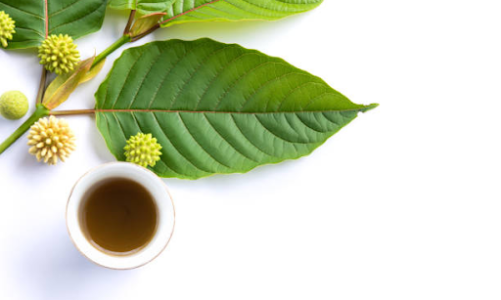Contents
Have you heard? Spirulina is thought to be one of the most nutritionally dense foods on the planet! This species of cyanobacteria is a fantastic source of protein, electrolytes, chlorophyll, B vitamins and much more. It nourishes and gently strengthens the body and mind.
Read on below to find out why spirulina is such a fantastic choice when it comes to supporting and strengthening your energy and vitality.
Chlorophyll
It is the green pigment in plants that captures the sun’s energy and converts it into food. A dark green color is often a good visual indicator of the vegetable’s nutritional benefits and chlorophyll is exceptionally high in spirulina. In fact, spirulina partly owes its brilliant blue-green color to its high chlorophyll content.
Chlorophyll supports the body’s key detoxifying organs – the liver and kidneys. That’s why it’s used as a popular weight loss drink. A cleansed body can help increase energy levels and make you feel in better health overall. Chlorophyll also has the benefits of being a potent anti-inflammatory, boosting energy, and preventing sickness.
Sustainable Source of Protein
Spirulina is a popular ingredient in protein shakes because of its surprisingly high protein content. Just one tablespoon contains around the same amount of protein as half a large boiled egg (4.02g of protein).
It’s a popular choice among those on vegan and vegetarian diets because, unlike many plant-based protein sources, spirulina is considered a complete protein. In other words, it is packed with all the essential amino acids – the building blocks of protein – required for protein assimilation in the body.
Spirulina is a great source of glutamine and phenylalanine – two amino acids that support energy production.
B Vitamins
The B vitamin complex is involved in converting nutrients into energy; that’s why the first sign of B-vitamin deficiency is fatigue and weakness.
Spirulina is a great source of vitamin B1, B2, B3 and B6.One teaspoon of spirulina contains 11% of the RDA of vitamin B1, thiamine. One essential role thiamine plays is helping to transform carbohydrates into energy.
Spirulina contains 15% of vitamin B2 (riboflavin). Like B1, riboflavin plays a vital role in energy production and digestion. It helps break down proteins, fats and carbohydrates into energy. Spirulina contains 4% of vitamin B3 (niacin), which allows the body to convert proteins and fats into energy.
One of the first signs of being low in B vitamins is fatigue and weakness, so keeping them topped up is essential.
Iron’s Role in Energy
Similar to B-vitamins, fatigue is one of the first signs of being low in iron. Iron facilitates the production of hemoglobin and promotes the circulation of oxygens, so when the iron is low, the heart has to work a lot harder to circulate oxygen to the cells.
The best way to keep iron levels in check is through iron-rich foods like spirulina. Spirulina contains 2 mg of iron per teaspoon.
Electrolytes and Hydration
Spirulina is considered the best electrolyte drink! It’s an excellent source of naturally occurring electrolytes, including sodium, potassium, magnesium and calcium. When it comes to energy, hydration is essential. Electrolytes are essential minerals that help to balance hydration levels and contribute to healthy muscle and nerve functioning.
Who Should Take Spirulina for Energy?
Spirulina is considered very safe, and given the high nutrient content, almost anyone can take it to boost their energy and health. Pregnant or menstruating women may especially benefit from taking spirulina for an energy boost.
Issues may arise if low-quality spirulina grown in contaminated environments is consumed. Blue algae can absorb heavy metals and toxins that can be absorbed into the body if consumed. But don’t worry, this is rare, and with a little bit of research, you can be sure you’re buying from a reputable brand.
How to Use Spirulina
It’s easy to successfully incorporate spirulina into your diet. Spirulina can mostly be found in powdered form and is often consumed by mixing it into food and drinks. Some ideas to get you started:
Spirulina apple juice shot
Take a 60ml glass of apple juice and stir in 2 teaspoons of spirulina powder. Once blended, drink as a shot for a great energy booster.
Spirulina smoothie
Add 200ml of coconut water, a handful of spinach, 2 stalks of celery, 1 apple cored and sliced, half a banana, and 1 tablespoon of spirulina powder to a blender. Blend until smooth and enjoy as a morning or post-workout drink.
Even when blended with other ingredients, some people are put off by the taste of spirulina, which is often described as ‘green tasting’ or earthy and fishy.
To still get the energy benefits from this algae powerhouse without the taste, sparkling spirulina drinks like the ones made by fulcompany.com are a great option. With all-natural ingredients, Ful drinks harness the power of spirulina but with a delicious flavor.
Final Thoughts
So, what are you waiting for? Gram-for-gram, spirulina is bursting with easily digestible vitamins, minerals, and proteins, making it one of the most nutrient-dense foods on the planet. It’s an effective and simple way to boost the nutritional profile of your diet.
If you want to give it a try, you can have options from powder and capsules to pre-infused drinks. Always buy spirulina from a responsible supplier. It should be grown naturally, free of pesticides, heavy metals and other contaminants.



